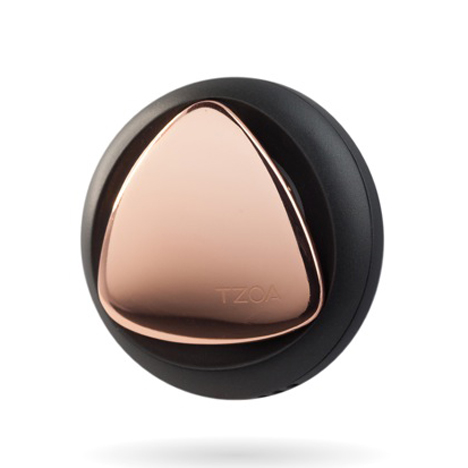
TZOA wearable environment tracker measures UV and air pollution
A group of Canadian designers has created a wearable device that monitors environmental data including air quality and UV radiation, and presents the metrics via an app.
Designed by Vancouver-based Woke Studios, the small clip-on TZOA device features an optical particle counter that relays data to a smartphone or tablet so the user can see how clean or dirty the air around them is.

"TZOA is a pioneer device in environmental monitoring," said a statement from the TZOA team. "A smart enviro-tracker that empowers people to improve their healthy habits and serves as a tool to better understand their surroundings."
The circular plastic clip covered with an interchangeable metallic triangular cap is designed to fasten onto a backpack, jacket or wallet.
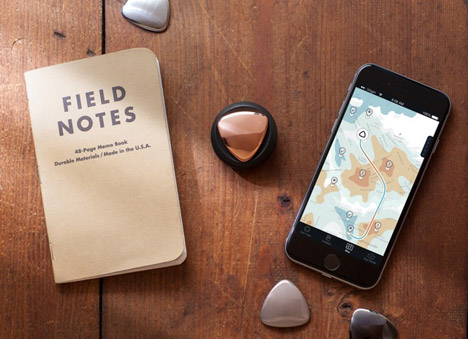
"The challenge was to make a very immaterial thing like air feel more tangible and engaging, interesting and approachable to consumers," said Woke Studios founder Afshin Mehin. "We designed a wearable device and app that could enable people to see their environment in a new way and treat the air as a more precious resource.
"The language of preciousness was also a perfect way to create an object that feels like jewellery or a fashion accessory that you're proud to wear," Mehin added.
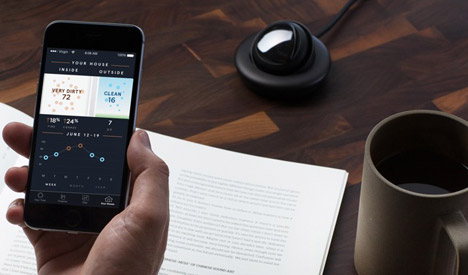
Particulate matter in the air includes both solids and liquid droplets. Those less than 10 micrometers – smaller than the diameter of a human hair – are known as "coarse particles" (PM10) and are commonly mixed into the air during construction work or vehicles kicking up dust.
Particles smaller than 2.5 micrometers (PM2.5) are called "fine particles" and are caused by exhaust fumes, other types of combustion, natural fires and various industrial processes.
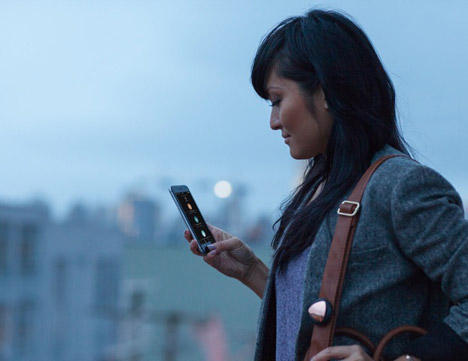
A bright light source inside s mall chamber within the device helps the custom-built sensor identify each particle. TZOA counts particles at PM2.5 and PM10 levels, which are shown along with the density to give an overall guide to the surrounding air quality.
"Traditionally, air pollution and UV radiation are measured by expensive and complex instrumentation, making it almost impossible to personally monitor the levels of air-pollution and radiation that people are exposed to on a daily basis," said the team.
This collected data is used to build crowdsourced city-wide maps so users can track worst-affected areas on the app and steer clear if they wish.
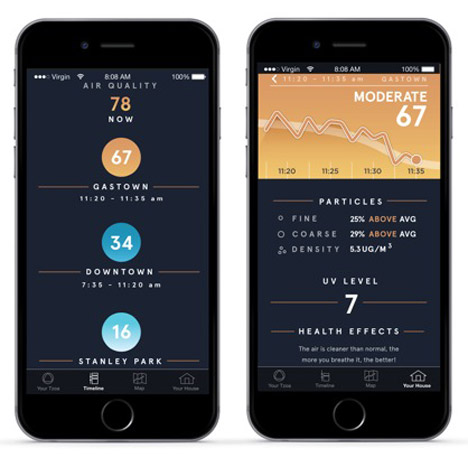
"By exploring new areas that haven't been mapped before, users can have a direct impact on their environment and help build a powerful tool to influence environmental policy," the group said.
UV radiation, humidity, temperature and light levels are also collected using a sensor and presented in a similar way on the app, which uses a minimal layout and bold graphics to illustrate the data.

If levels of any tracked metric spike, the app sends a notification to the user's phone to alert them.
The device is also designed to work indoors, counting particles including mould, dust and carcinogens in the same way.
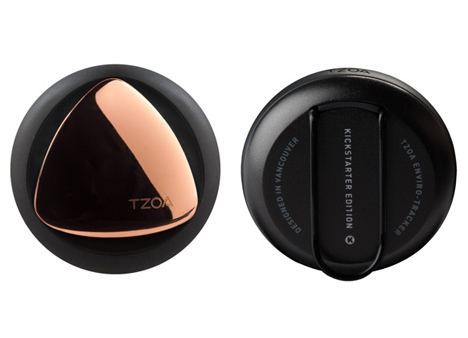
TZOA launched on crowdfunding platform Kickstarter earlier this month and is almost $16,000CAD (£9,000) towards its target of $110,000 (£62,000).